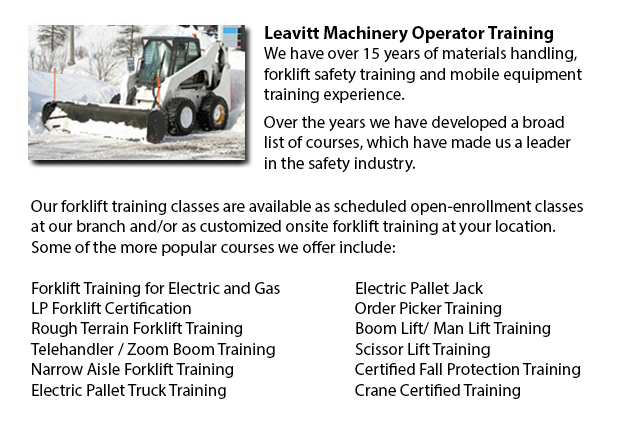
Oakville Skid Steer Ticket - On a skid-steer loader, the lift arms are next to the driver together with pivot points at the rear of the driver's shoulders. This makes them different as opposed to a traditional front loader. Due to the operator's closeness to moving booms, early skid loaders were not as safe as traditional front loaders, particularly in the operator's exit and entry. Modern skid-steer loaders today have various features to protect the driver like fully-enclosed cabs. Like various front loaders, the skid-steer model could push materials from one location to another, is capable of loading material into a truck or trailer and could carry material in its bucket.
Operation
Usually a skid-steer loader could be used on a job location instead of a big excavator by digging a hole from within. To start with, the skid-steer loader digs a ramp leading to the edge of the desired excavation, and next it makes use of the ramp to be able to excavate material out of the hole. As the excavation deepens, the machine reshapes the ramp making it steeper and longer. This is a very useful technique for digging beneath a structure where there is not sufficient overhead clearance for the boom of a large excavator. For instance, this is a common situation when digging a basement below an existing building or home.
There is much flexibility in the accessories which the skid steer loaders are capable of. For example, the conventional bucket of many of these loaders could be replaced with various attachments which are powered by the loader's hydraulic system, consisting of pallet forks, backhoes, tree spades, sweepers, mowers, snow blades and cement mixers. Some other popular specialized attachments and buckets include trenchers, angle booms, dumping hoppers, wood chipper machines, grapples, tillers, stump grinders rippers, wheel saws and snow blades.
History
During nineteen fifty seven, the very first 3-wheeled, front-end loader was invented in Rothsay, Minnesota by brothers Louis and Cyril Keller. The brothers invented the loader so as to help a farmer mechanize the process of cleaning turkey manure from his barn. This machinery was light and compact and had a rear caster wheel that enabled it to turn around and maneuver within its own length, allowing it to execute similar work as a conventional front-end loader.
During the year 1958, the Melroe brothers of Melroe Manufacturing Company in Gwinner, N.D. obtained the rights to the Keller loader. They employed the Keller brothers to continue refining their loader invention. The M-200 Melroe was the end result of this partnership. This model was a self-propelled loader which was launched to the market during 1958. The M-200 Melroe featured a a rear caster wheel, a 12.9 HP engine, a 750 lb lift capacity and two independent front drive wheels. By 1960, they changed the caster wheel along with a back axle and launched the very first 4 wheel skid steer loader which was called the M-400.
The term "Bobcat" is used as a generic term for skid-steer loaders. The M-400 shortly after became the Melroe Bobcat. The M-440 version has rated operating capacity of 1100 lbs powered by a 15.5 HP engine. The company continued the skid-steer development into the mid nineteen sixties and introduced the M600 loader.
-
Oakville Overhead Crane Safety Training
Oakville Overhead Crane Safety Training - Overhead crane safety training equips operators with skills and knowledge regarding crane safety measures, accident avoidance, materials handling, and machinery and stock protection. Trainees will learn the t... More -
Oakville Crane Training Schools
Oakville Crane Training Schools - Our various Mobile Crane Operation programs are designed for skilled operators who needs re-certification or certification, and for inexperienced individuals who are seeking their very first job as an operator of a c... More -
Oakville Overhead Crane Certification
Oakville Overhead Crane Certification - The overhead crane certification course is a course that is designed to help trainees, even though they have language or literacy limits. The course consists of a classroom theory part and a practical hands-on... More -
Oakville Forklift Training Programs
Oakville Forklift Training Programs - If you are searching for work as an operator of a forklift, our regulatory-compliant forklift training programs provide exceptional instruction in various types and styles of forklifts, classes on pre-shift inspe... More -
Oakville Fall Protection Ticket
Oakville Fall Protection Ticket - The number one cause of death in the construction business come from fall-related accidents. There is more possibility for fall accidents depending on the types of work being performed within your workplace. Thus, be... More -
Oakville Zoom Boom Training
Oakville Zoom Boom Training - Zoom Boom Training focuses on correctly training potential operators on variable reach forklifts. The training objectives consist of gaining the understanding of the machine's physics and to define the job of the operato... More -
Oakville Aerial Lift Ticket
Oakville Aerial Lift Ticket - A boom truck is often recognized by the cable and telephone company vans that have the elongated arm folded over their roofs. Commonly, a bucket-like apparatus sits at the extension of extendable arms. Often referred to... More -
Oakville Scissor Lift Training
Oakville Scissor Lift Training - Scissor lifts need to be operated competently to be able to protect the safety of the machinery and the safety of people in the workplace. Operators who are skilled are trained to drive the specific model of scissor l... More

Forklift Certification Oakville
TOLL FREE: 1-888-254-6157
Oakville, Ontario
forkliftcertificationoakville.com
Email Us
About Us


